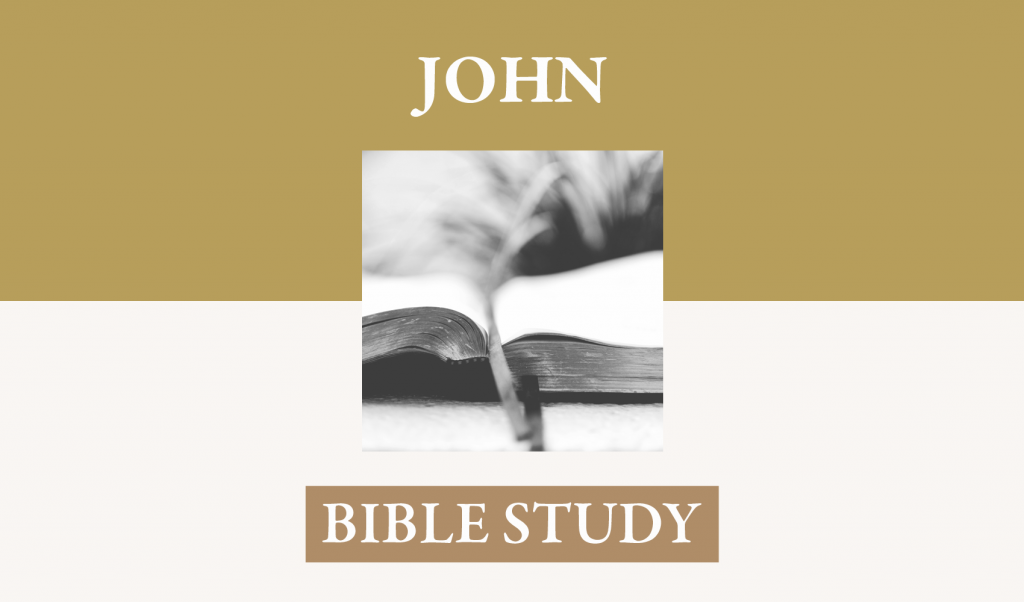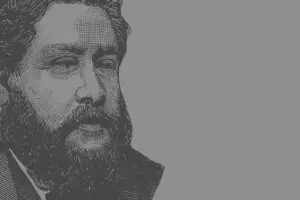John 20:1–18
In light of John’s purpose in writing, he emphasized the resurrection of Jesus as an event, though predicted by Jesus throughout his ministry, that was unexpected (John 2:21, 22; 6:49-58; 7:33; 8:14, 21; 10:17, 18; 11:25, 26; 12:23-26; 13:19, 31-33, 36; 14:1-4, 19, 23, 28; 15:26; 16:5-7, 16, 19-22, 28). The prejudices of his most intimate friends and followers were against such a thing and a basic skepticism ruled their hearts. In addition, their grasp of the radical character of redemption had not taken root in their consciousness. This makes the nature of the evidence all the more impressive as it unfolds part by part into one person after another, culminating in John’s poignant pronouncement, “These [signs] are written that you may believe that Jesus is the Christ” (20:31).
I. The testimony of Mary Magdalene gives the first element of evidence of the veracity of these events in the history of redemption.
Not only does her eyewitness account ring true, but the historical credibility is enhanced in that an effort to produce a deceit probably would have selected a more prominent first witness. She was a woman and formerly of doubtful reputation and emotional stability (Mark 16:9). Someone more easily creditable to the public would have been chosen if the narrative were a piece of literary propaganda.
A. She observed that the stone was rolled away (20:1).
John began with the most elementary of all the evidences, but demands, nevertheless, a credible answer: “Who rolled away the stone?”
B. She observed that the tomb was empty (20:2).
Her going to the disciples included the report that someone had “taken him away.” Obviously, she had at least peered into the tomb in an amazed curiosity to see that the body was not there. Her first conclusion was not “resurrection” but that his dead body had been removed by someone. This same opinion prevailed even after another visit to the tomb and the observation of other witnesses. She said this at some point to the angels and even to Jesus (13, 15). The projection of this explanation shows that the concept of resurrection did not flood her mind out of some naïve, hope-centered delusion. Her mind gravitated toward what seemed most likely in light of all the things she observed.
C. She mistook Jesus for another person when she first saw and heard him.
She spoke to him as if he were the maintenance man in the garden. Jesus must have appeared as normally human (14, 15).
D. She recognized his voice when he called her name.
She did not grasp his identity when he asked her the questions, “Woman, Why … Whom?” Perhaps the sound was eerily familiar, but the possibility was so remote that she assumed that a stranger spoke. This is another detail of the genuineness of her report. But from the fact that he knew her name—“Mary!”—and perhaps because she had often heard the inflection of his voice in saying it, she immediately perceived who he was—“Rabboni.”
E. She touched him and clung to him (17).
Jesus gave a clear statement that she must not think that now he will stay here. “You must not keep clinging to me in hopes that I will continue here in this physical state.” A. T. Robertson interprets Jesus’ meaning, in light of the type of imperative this is, “The prohibition here reminds Mary that the previous personal fellowship by sight, sound, and touch no longer exists and that the final state of glory was not yet begun. Jesus checks Mary’s impulsive eagerness.” As he earlier told the disciples, he must ascend in order to send the Holy Spirit to effect all of those things put into place by the death of Jesus (John 14:25-29; 16:5-15). Their own future ministries would be done under the power of the Spirit in the new covenant arrangement. Note the tenderness with which he calls “Brothers” these that have most recently forsaken him and fled in the hour of danger.
F. His message to them that he is ascending should spark within them a great confidence that all he said is surely coming to pass.
The plan established before the foundation of the world now unfolds with greater clarity. Their own part in it will soon be given pertinence. This message was to be given them prior to his appearance to them.
G. She told the disciples that she had seen the Lord, and, indeed, he had talked to her.
She communicated a message from Jesus to the disciples. We learn, however, in the next verse that the disciples were still fearful of the Jews, unable to process the truth of this astounding report and much less able to internalize its meaning for the present and final triumph of Jesus.
H. In Acts 1:9–11, Luke reports the visible ascension of Christ where he will remain until his return in great glory (1 Thes 1:10; 2:19; 3:13; 4:13, 16–18; 5:2, 23; 2 Thessalonians 1:6–10; 2:8; 2 Peter 3:10–13; Jude 24, 25; Revelation 11:15–19; 21:22–27).
The manner of his several manifestations to the disciples after the resurrection, however, combined with these words to Mary, indicate that Jesus did not remain on earth in an invisible state or wandering the earth alone, but that he did ascend bodily to the Father. Though his appearances did not give visible manifestation of his heavenly glory, the quickness and ease of his bodily movement (John 20:19, 26; 21:1; Luke 24:15, 30, 31, 36) indicate that he already had his glorified body and still was on mission from the Father in the several instances of his appearing. He had a real body (John 20:20, 21, 27; Luke 24:38, 39; Matthew 28:9) that could move and maneuver in the physical world without hindrance from physical barriers.
II. The Observations of John and Peter – verses 3–10
A. They did not go casually, but they ran. John, the younger of the two, was not concerned about waiting for Peter, but on reaching the burial place as rapidly as possible. He outran Peter.
B. They observed the empty tomb.
John arrived first and looked in the tomb. When Peter arrived, he went in, always more aggressive and insistent on learning how things are. He often spoke what the rest of the disciples were thinking, or did what the other disciples wanted to do, but hesitated. When he entered the tomb, John found his boldness increased, and so also entered (8).
C. They observed the orderly nature of the linen clothes in which he had been wrapped, with the face cloth wrapped by itself (5, 6, 7).
Someone obviously had taken time to fold these grave clothes neatly. Either Jesus himself had done it, or the angels attending him had done it. Also, it is possible that, in the same way locked doors provided no hindrance for the entrance of Jesus bodily into the presence of his disciples, so the grave clothes merely collapsed when the resurrection occurred. The clothes in which his body was wrapped just fell flat when his body vacated the tomb. If stone walls and a heavy boulder could not hinder the exit of the body of Jesus, much less would grave clothes need to be removed by physical manipulation. In either instance, it demonstrates that Jesus’ body was gone and had vacated not only the tomb but the dead-body wrappings.
D. The events convinced John of Jesus’ resurrection, but he did not yet see its consistency with the Old Testament Scripture (9).
III. Take Away from the Bare Event
A. Before one can receive the benefits of the resurrection, he must believe that it is historically true.
Thus John goes into detail concerning how those first observers became convinced. God created the world, human sin brought the fall and all its consequences. The redemption of the created order from both the physical and moral effects of the fall must come from a reverse operation within creation itself. That is done in the life and death of Christ. The first evidence of its success and the actual material manifestation of its result is in the resurrection of the dead body of Jesus and its unification with his rational and emotional powers. In the same way that the event sets in motion the benefits, so believing the event is fundamental to receiving its advantages. Believing the truth claims is a part of biblical faith. There is no such thing as a Christian who does not believe in the resurrection.
B. The subsequent, and consequent, gift of the Spirit depended on the faithful accomplishment of this wrestle with death so we can say, “O Grave, where is your victory? O Death, where is your sting?”
Not to believe the resurrection is to deny that sin is forgiven in the death of Christ: “The sting of death is sin.” Not to believe the resurrection is to deny that God’s law had been violated but now has been fulfilled and satisfied: “The power of sin is the law” (1 Corinthians 15:55, 56).
C. The explanation of the number and nature of blessings intrinsic to the resurrection came through the inspired revelatory work of the Holy Spirit to the apostles (1 Corinthians 2:1–13; 2 Timothy 3:14–17; Galatians 1:11, 12; 1 Thessalonians 1:5, 9–10; 2:13).
The result of forgiveness (Ephesians 1:7), security from the coming wrath f God (Ephesians 5:6; 1 Thessalonians 1:10; 5:9; 2 Thessalonians 2:10-12), justification (Romans 4:24, 25), redemption (Romans 2:24; Ephesians 1:7), reconciliation (Romans 5:1-10), release from satanic domination (2 Corinthians 4:4; Ephesians 2:2; 2 Thessalonians 2:9, 10), and breaking the power of the world (1 John 2:15-17).
D. The application of advantages to the person comes in the effectual work of the Holy Spirit.
Believing in the heart that God raised him from the dead (Romans 10:9) means that we fully consent in mind, spiritual perception, and affections to all the legal and spiritual entailments of Jesus’ death. Had he not died, we would have no forgiveness; had he not been raised we would have no justification (to whom it will be credited, as those who believe in Him who raised Jesus our Lord from the dead, who was delivered over because of our transgressions, and was raised on account of our justification” (Romans 4:24, 25).
Though it was dark, the true light was shining;
Features were stark, but death was declining.
Expecting a stone as a seal to the tomb,
It had been moved and the grave an empty room.
The dead man no longer was there.
“They took the Lord,” so Mary concluded.
Recall his word when doubt has intruded!
The third day the devil of death will be crushed.
The shouts of his demons for victory hushed.
The grave now is void of despair.
Women had seen and angels had spoken.
The bier was clean, the chains of death broken.
Where sin had abounded to bring death and hell,
The death of the Righteous One made all things well;
Wrath gives way to God’s tender care.
Quickly they ran. Could her witness be true?
Witness expands; John and Peter saw, too.
The grave now was empty, the wrappings in place,
But of Jesus’ body there was not a trace.
What they had seen, Scriptures declare.
Sad and distraught, Mary peered in the tomb.
Mercy unsought, angels pierced her dark gloom.
The Crusher of Death called with tender intent,
“Why weeping?” He asked; “My Lord’s gone,” her lament.
“Mary.” “Rabboni.” “Go and share.”
The Lord’s alive and soon he must ascend.
Faith may now thrive; our advocate defends.
This death has made the Judge our God and Father.
His intercession means the saints will gather
To meet their Savior in the air.





















